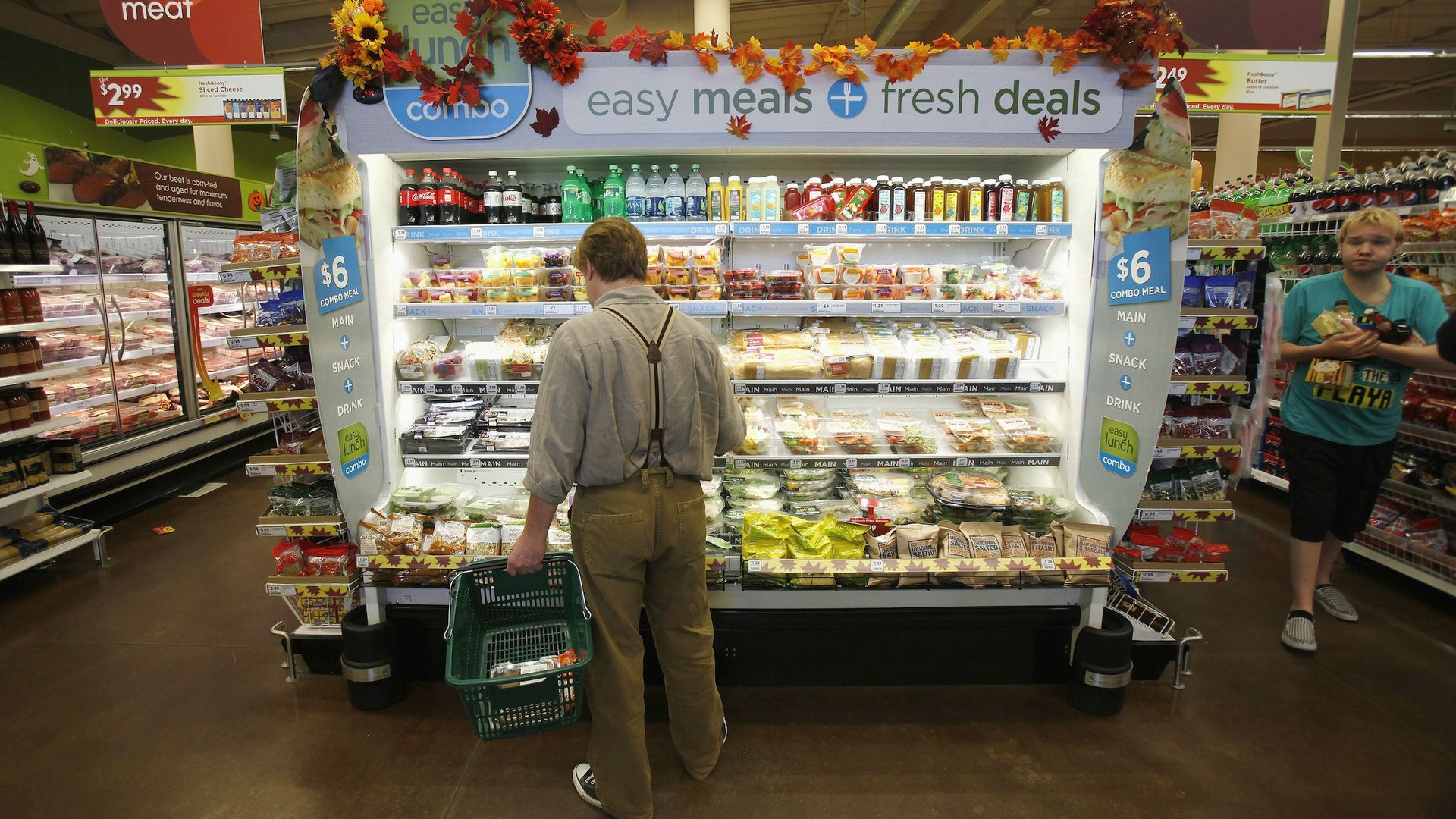Why the world’s third largest grocery conglomerate couldn’t make it in the US
This item has been corrected.


This item has been corrected.
Tesco’s attempt to sell groceries to Americans has been an ignominious flop. Six years and £1.8 billion, or over $2 billion in losses after it opened its Fresh and Easy chain of stores in the US, the British firm yesterday said that it’s selling most of its US outlets to a company run by billionaire Ronald Burkle for zero dollars, and even lending him $126 million for his trouble.
What went wrong? Hard to say, exactly. Before launching in 2007, Tesco studied the US market for years—hiring anthropologists and sending executives to live with families and study the contents of their refrigerators. By focusing on discount fresh food, Fresh & Easy planned to take on both high-end organic retailers like Whole Foods and the stack-’em-high-and-sell-’em-cheap approach of Wal-Mart, with dozens of small shops in both wealthy and poorer neighborhoods in California, Nevada, and Arizona.
Some decisions were probably mistakes. In a market where shoppers are used to store clerks and personal help, Fresh & Easy stores had only self-check-out counters. Food was packaged in quantities better fit for Europeans, who make more frequent and smaller shopping trips. For some, the stores’ heavy focus on ready-made meals, which have taken up ever-greater lengths of supermarket aisle in Britain, was strange in a country where the “TV dinner” was a 1950s craze.
Tesco joins a list of retailers that have pulled back from US ventures, like the UK’s Sainsbury’s, Marks & Spencer, Dixons, WH Smith and HMV, as well as other foreign firms. Other international retailers, from Canada’s Loblaws in the early 1900s to France’s Carrefour in the 1980s, have been trying and failing in the American market for the past century.
The US grocery market does seem especially difficult to crack. While other industries have consolidated, groceries has not, in part because of how much consumers’ tastes and shopping habits vary across the country. As of 2009, America’s 10 largest grocery chains accounted for only 35% of stores (pdf).
Another thesis, Marcel Corstjens from Insead and Rajiv Lal from the Harvard Business School argued in a paper last year, is that it’s just difficult for grocery retailers to cross borders in general. “It would be logical to expect that grocery retailers would enter the world’s biggest markets—the United States, Germany, Japan, the UK, and France—to boost revenues and profits. Yet no retailer is present in all of them today,” they write.
A big grocery retailer that wants to break into a market has to figure out how to acquire local partners and suppliers, bring in original enough concepts to convince customers to switch stores, and often sell across regions with highly diverse groups of customers. Certainly, Tesco didn’t do these things well in its American foray.
But perhaps Tesco’s biggest mistake was that by making so much effort overseas, it neglected its home market. The world’s third largest retailer by revenue has seen its sales in Britain slide and last year had to issue its first profit warning in 20 years. As one analyst observed last year, ”Tesco sent the A team to run the US operation and, by definition, that left behind the B team running the UK side.”
Correction (Sept. 12): An earlier version of this article incorrectly said that as of 2011, the 10 largest grocery chains in the US accounted for 35% of sales.